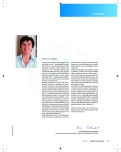Urinary tract infections - risk factors for resistant pathogen infection
Authors:
R. Tahotný; S. Krčméry
Authors‘ workplace:
UNsP Milosrdní bratia, II. Klinika geriatrie LF UK, Bratislava
Published in:
Geriatrie a Gerontologie 2012, 1, č. 2: 71-76
Category:
Original Article/Study
Overview
Antimicrobial treatment of urinary tract infections mostly begins in clinical practice empirically from many reasons. A result of antimicrobial treatment especially depends on an antimicrobial susceptibility of causing uropathogens. Prediction of the antimicrobial susceptibility of causing uropathogens is the necessary condition of the selection of an adequate empiric treatment. Information about local distribution of uropathogens and susceptibility serve for this purpose. Furthermore risk factors for uroinfection caused by uropathogens resistant to antimicrobials should be taken into consideration. The aim of our study was an assessment of possible connection among prevalence of uropathogens resistant to antimicrobials and selected patient`s risk factors (sex, urinary catheter presence, clinical presentation of the uroinfection). Methods: From 2006–2007, all uropathogens cultured from the urine of hospitalized patients at our department were retrospectively analyzed. The uropathogens were assigned to groups according sex, urinary catheter presence and clinical presentation of the uroinfection. A relation among the susceptibility to given antibiotics and patient` s risk factors were analyzed.
Results and conclusions:
Antimicrobial resistance to all five analyzed antibiotics was significantly higher in uropathogens cultivated from urine samples of patients with upper urinary tract infection and patients with urinary catheter. Antimicrobial resistance to only three from analyzed antibiotics was significantly higher in uropathogens cultivated from urine samples of men.
Key words:
antimicrobial resistance – uropathogens – urinary tract infection – risk factors
Sources
1. Krčméry, S. a kol.: Chemoterapia uroinfekcií. Bratislava: Charis 2001, s. 120.
2. Nicolle, L. E.: Resistant pathogens in urinary tract infection. J Am Geriatr Soc 2002; 50 : 230–235.
3. Teplan, V., Horáčková, M., Bébrová, J., Janda, J. a kol: Infekce ledvin a močových cest v dospělém a dětském věku. Praha: Grada Publishing 2004; 252.
4. Bochud, P. Y., Bonten, M., Marchetti, O., Calandra, T.: Antimicrobial therapy for patients with severe sepsis and septic shock: An evidence-based review. In: Crit Care Med 2004; 32(11): Suppl. 495–512.
5. Shales, D. M., Gerding, D. N., John, J. F., Craig, W. A., Bornstein, D. L.et al.: Society for Healthcare Epidemiology of America and Infectious Diseases Society of America Joint Committee on the Prevention of Antimicrobial Resistance: Guidelines for the prevention of antimicrobial resistance in hospitals. In: Clin Infect Dis 1997; 25(3): 584–599.
6. European Centre for Disease Prevention and Control. Antimicrobial resistance surveillance in Europe. Annual report of the European Antimicrobial Resistance Surveillance Network (EARS-Net) 2009 [on-line], 2010. Dostupné na: www.ecdc.europa.eu/en/publications/Publications/1011_SUR_annual_EARS_Net_2009.pdf
7. Smithson, A., Chico, C., Ramos, J. et al.: Prevalence and risk factors for quinolone resistance among Escherichia coli strains isolated from males with community febrile urinary tract infection. In: European Journal of Clinical Microbiology & Infectious Diseases [on-line], 2011. Dostupné na: www.springerlink.com/content/1g52283472r1g5mt/fulltext.pdf
8. Poirel, L., Cattoir, V., Nordmann, P.: Is plasmid-mediated quinolone resistance a clinically significant problem? Clin Microbiol Infect 2008; 14(4): 295–297.
9. Azap, Ö. K., Arslan, H., Şerefhanoğlu, K. et al.: Risk factors for extended-spectrum β-lactamase positivity in uropathogenic Escherichia coli isolated from community-acquired urinary tract infections. In: Clinical Microbiology and Infection 2010; 16(2): 147–151.
10. Kurtaran, B., Candevir, A., Tasova, Y. et al.: Antibiotic resistance in community-acquired urinary tract infections: Prevalence and risk factors. In Medical Science Monitor [on-line] 2010; 16(5). Dostupné na: www.medscimonit.com/fulltxt.php?ICID=878545
11. Alós, J. I., Serrano, M.G., Gómez-Garcés, J. L., Perianes, J.: Antibiotic resistance of Escherichia coli from community-acquired urinary tract infections in relation to demographic and clinical data. In: Clinical Microbiology and Infection 2005; 11(3): 199–203.
12. Van der Starre, W. E., Van Nieuwkoop, C., Paltansing, S. et al.: Risk factors for fluoroquinolone-resistant Escherichia coli in adults with community-onset febrile urinary tract infection. In: Journal of Antimicrobial Chemotherapy 2011; 66(3): 650–656.
Labels
Geriatrics General practitioner for adults Orthopaedic prostheticsArticle was published in
Geriatrics and Gerontology

2012 Issue 2
Most read in this issue
- Psychomotor agitation and its treatment from point of view of psychogeriatrists
- Treatment of pain in geriatric patients – do we know the pitfalls?
- Drinking regime as a part of therapeutic intervention in seniors.
- Nurses view on elderly and old age
